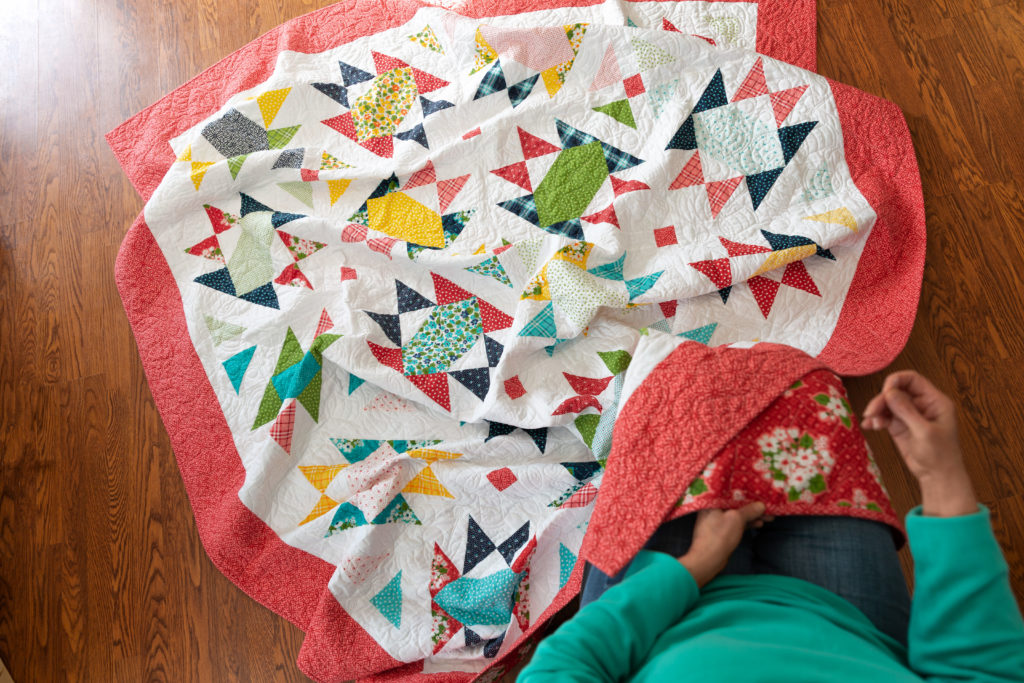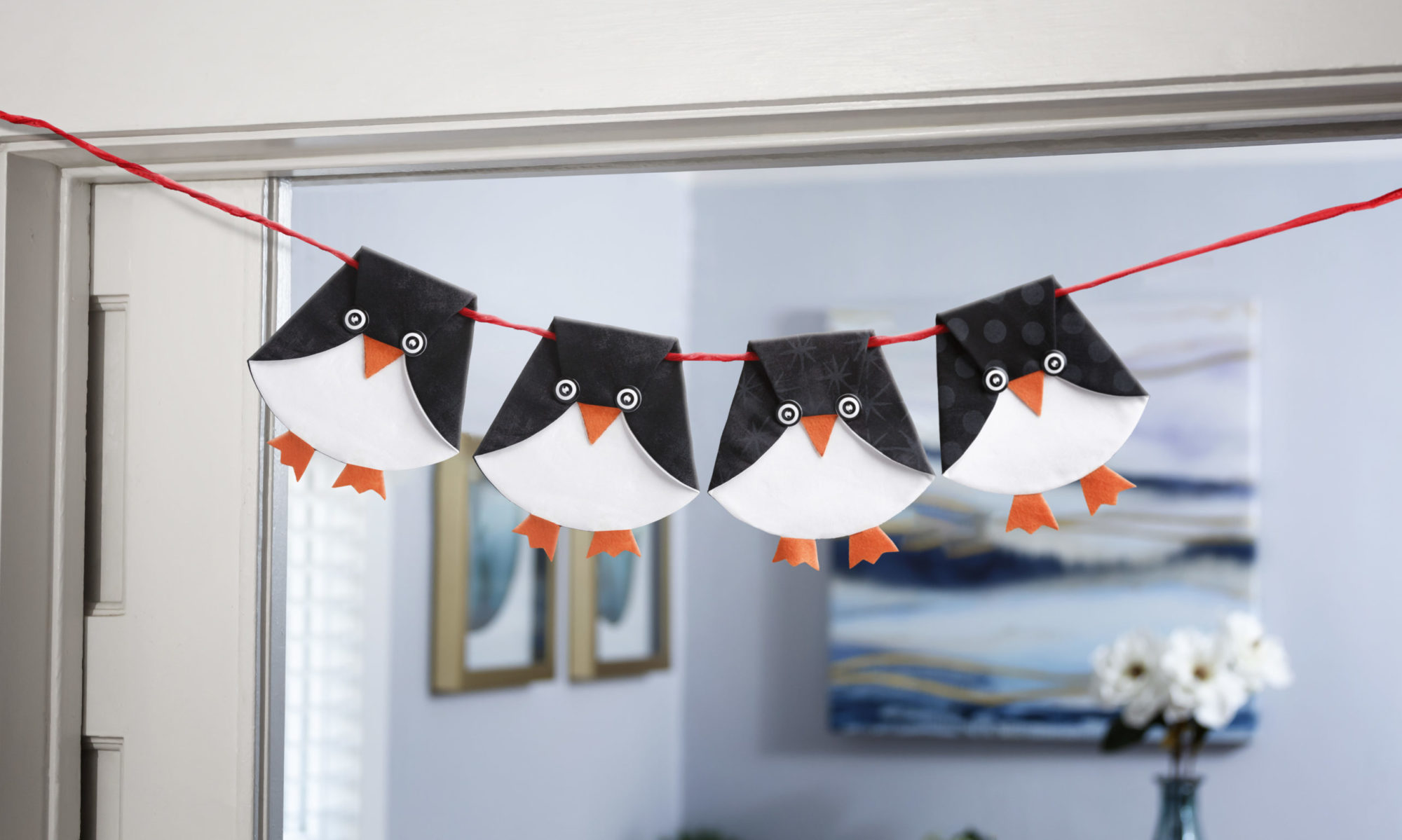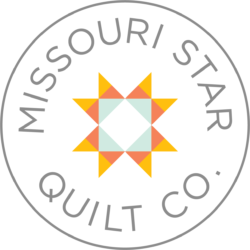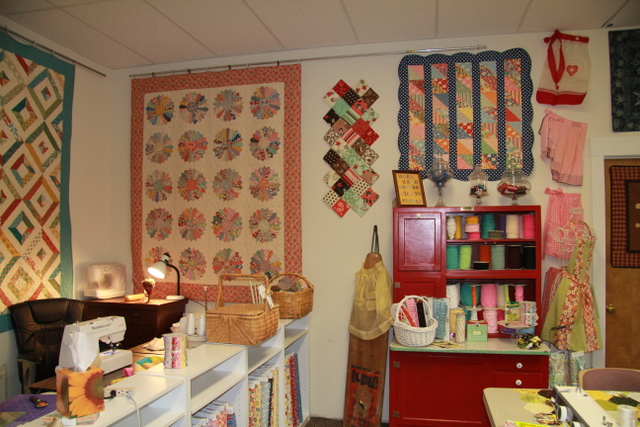When engaged in a casual conversation about feedsacks with a non-quilter or someone new to the craft who might not be familiar with antique quilts, the picture that often comes to mind is a bag made of burlap, paper, or heavy canvas that has been filled with animal feed. For the lover of antique quilts and vintage fabric, the vision is quite different. Instead of paper or rough gunny sacks, we think of pretty, soft bags made of dress prints. Over the years, the word feedsack has become an all-inclusive term used for these charming fabric bags and a rich history follows them wherever they are found.

Reproduction fabrics patterned after prints from the 1930s-1950s, recreate the cotton feed sacks in which flour and grain were sold during the Great Depression. Companies realized some people had started recycling the simple gunny sacks to use as clothing, undergarments, and towels since many were struggling to afford these things elsewhere. This led to feed sacks becoming decorated with prints in pretty pastels and playful images so clothes could still be made with some style.
Initially, feedsacks were made of white material and based on barrel sizes. The factory printed the company logo, or barrel stamp, directly on the bag along with directions on how to unlock the stitches that closed the bag. Richard Peek, vice president of the Percy Kent Bag Company, is often credited with the idea of using beautiful dress prints for making bags. The story goes that he had walked into a restaurant and saw chair covers and curtains made from ordinary cotton bags. It occurred to him that if the bags were made using decorative prints, not only could he promote sales of his bags but bring attention to the goods sold in the bags as well.
By 1935, Percy Kent was successfully marketing their new print bags. It was a brilliant tactic. It’s unknown how enthusiastic farmers were about the print bags, but it was easy to see that they were a big hit with the ladies! Women were happy to take charge of choosing the sacks they wanted to use when making clothing for their families. It took about three large bags to make a dress. Many were the disgruntled employees who worked in the feed store when they had to sort through heavy bags to come up with three that matched!
While the Percy Kent Bag Company is often given full credit for coming up with the idea of using dress prints for feedsacks, they weren’t exactly the first to entertain the notion. In 1925, Gingham Girl Flour ran an advertisement touting the high grade of gingham they had used when making their bags. Bemis and Fulton Bag companies both kept samples of prints they had produced during the 20s and 30s as well.
As print bags became the norm and were readily available, women fussed and fumed about the ink that was used to print the labels on the bags. Tips on how to remove the ink appeared in newspapers and magazines. Some advised rubbing lard into the ink and letting it sit overnight. Then they were to scrub the bag on a washboard using lye soap. Others recommended soaking bags in kerosene, then washing them with Fels Naptha soap.
Soon, bag manufacturers began printing their own directions on how to remove the ink directly onto the bag itself. The only problem with that was that often the only ink that didn’t come out, after all the soaking and washing and scrubbing, were the directions on how to remove the ink! After dealing with many complaints, manufacturers began to use paper labels which they pasted onto the bag.
For the bag companies, sacks made from pretty prints may have been a marketing ploy, but for the families trying to survive hard times, the bags were so much more. The fabric meant new clothes for the whole family, curtains for the home, towels for the kitchen, and pillowcases for the bedroom. And, of course, quilts from the scraps that were left after sewing.
For some families, the bags also meant being able to provide gifts for their children. Victor Flour had puppets and dolls printed on the backs of their bags. Sea Island Sugar printed dolls that could be cut out, sewn together, and stuffed. They were careful to let people know that the ink used in the printing process was not poisonous. The drawback for many of the dolls and toys printed on sacks was that the ink wasn’t particularly colorfast, but they made beloved toys.
Written by Edie McGinnis, former Missouri Star pattern writer, and member of the American Quilter’s Society and the Quilters Guild of Greater Kansas City.
What the world was like (1930-1950s):
- The price of women’s stockings were 89 cents.
- Scotch tape was invented by Richard Drew at 3M company.
- American aviator, Amelia Earhart disappeared over the Pacific Ocean attempting to navigate the globe.
- Time Magazine’s Man of the Year was Mohandas Karamchand Gandhi.
- Marvel introduces Captain America.
- The construction and completion of Mount Rushmore.
SHOP 1930s REPRODUCTIONS FABRICS
Here are some of our favorite patterns to make with 30s fabrics:
Relive history through these reproduction fabrics. Find your favorite today!










